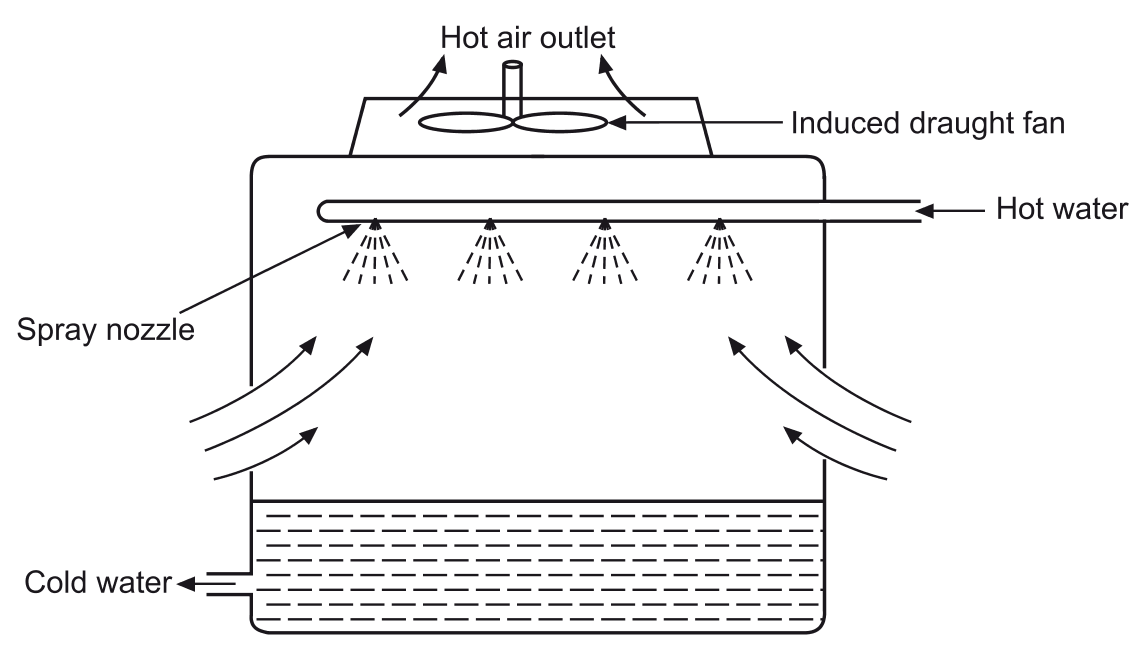
Working Principle of an Induced Draught Cooling Tower
An induced draught cooling tower works by utilizing a fan at the top to pull air through the system, thereby enhancing heat dissipation. The process follows these steps:
- Hot water enters the cooling tower through an inlet pipe.
- The hot water is distributed via spray nozzles, forming small droplets.
- Air enters the tower from the sides at the bottom due to the suction effect created by the induced draught fan at the top.
- The air moves upward, interacting with the falling water droplets, causing evaporation and cooling.
- The cooled water is collected at the bottom and exits through the cold water outlet.
- The warm, moist air is expelled through the hot air outlet at the top, ensuring a continuous cooling cycle.
Parts of an Induced Draught Cooling Tower
- Hot Water Inlet – Delivers heated water from the industrial process.
- Spray Nozzles – Disperse water into fine droplets for enhanced heat transfer.
- Air Inlet – Allows fresh air to enter the cooling tower.
- Cooling Media (Fill Material) – Enhances contact between water and air.
- Cold Water Basin – Collects cooled water at the bottom of the tower.
- Induced Draught Fan – Located at the top, it pulls air through the system.
- Hot Air Outlet – Expels warm, humid air after heat exchange.
Advantages of Induced Draught Cooling Towers
- Higher Efficiency – Enhanced cooling due to better airflow control.
- Lower Power Consumption – More efficient than forced draught towers.
- Better Water Distribution – Ensures effective heat exchange.
- Compact Size – Requires less space compared to natural draught towers.
- Less Affected by Wind Variations – Consistent performance under different weather conditions.
Applications of Induced Draught Cooling Towers
- Power Plants – Used for cooling condenser water in thermal plants.
- HVAC Systems – Applied in large air conditioning and refrigeration systems.
- Chemical & Petrochemical Plants – Used in process cooling.
- Steel & Manufacturing Industries – Helps in temperature regulation.
- Food & Beverage Industry – Maintains cooling during food processing.
Disadvantages of Induced Draught Cooling Towers
- Higher Initial Cost – Requires investment in mechanical components.
- Maintenance Requirements – Fans and motors need periodic servicing.
- Noise Generation – Induced draught fans can be noisy.
- Risk of Corrosion – Exposure to moisture may lead to material degradation.
- Drift Losses – Some water can be lost as mist if not properly managed.